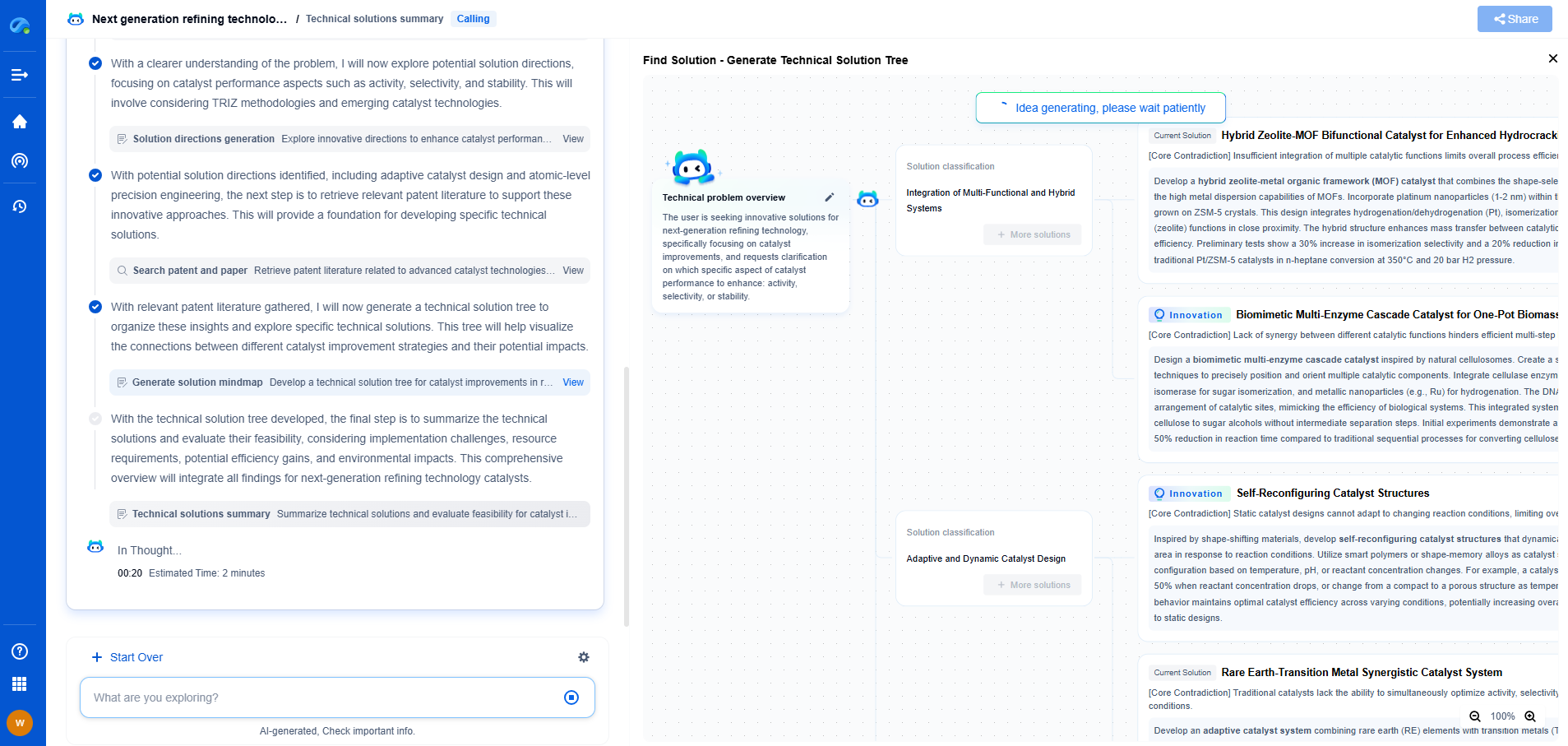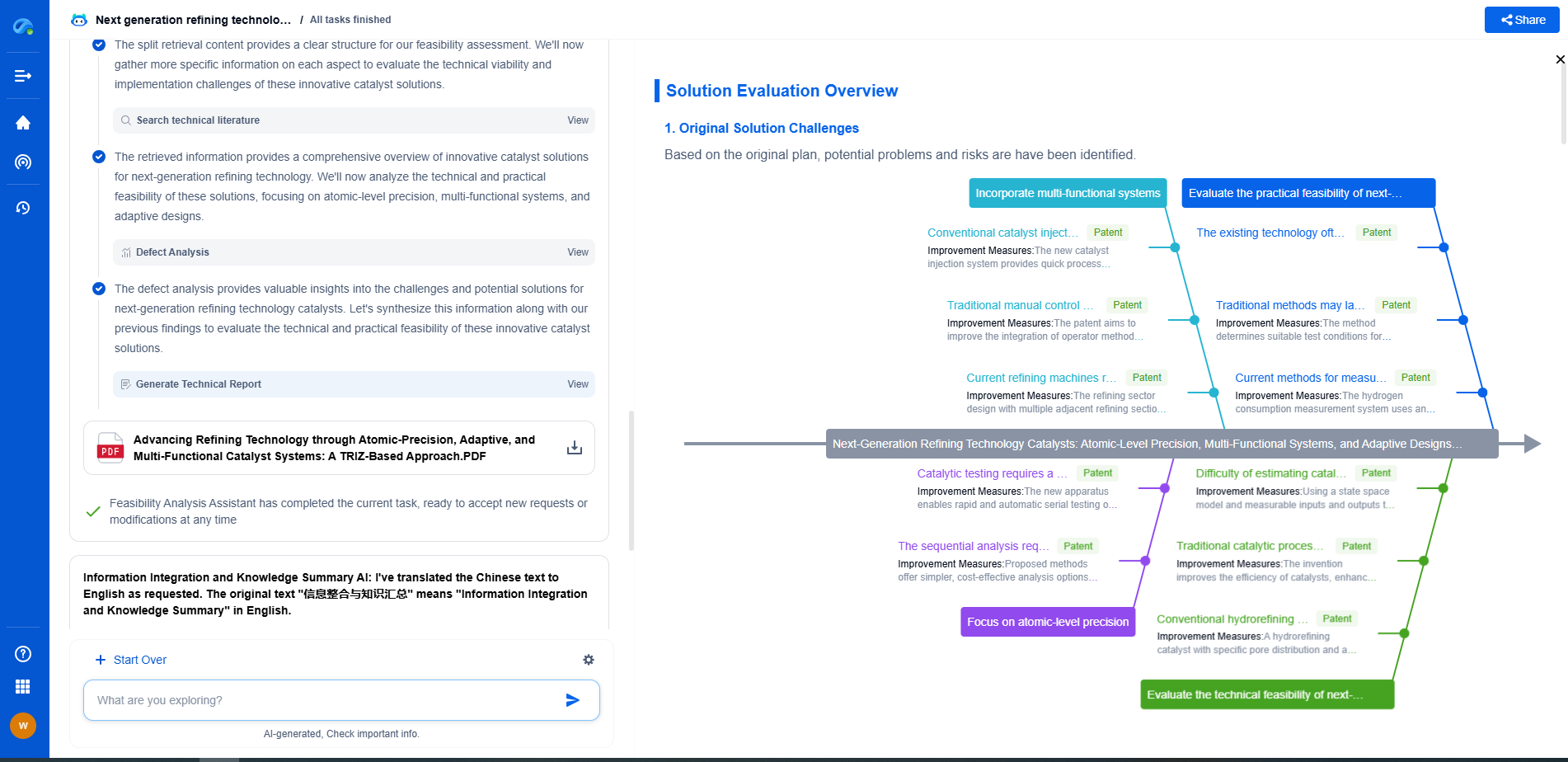Ceramic vs metallic components in high-wear drilling environments
JUN 20, 2025 |
In high-wear drilling environments, selecting the appropriate material for components is crucial for optimizing performance and longevity. Two popular choices in the industry are ceramic and metallic components, each offering distinct advantages and challenges. This article explores the attributes of both materials, helping you make an informed choice for your specific drilling needs.
Ceramic Components: Advantages and Challenges
Ceramic materials are renowned for their exceptional hardness and wear resistance, making them a popular choice in high-wear drilling environments. Their ability to withstand extreme temperatures and chemical corrosion further enhances their appeal. In applications where precision and durability are paramount, ceramics can significantly extend the lifetime of drilling components, reducing downtime and maintenance costs.
However, ceramics are not without their challenges. They are inherently brittle, which can lead to catastrophic failure under impact or when subjected to tensile stress. This brittleness necessitates careful handling and design considerations to mitigate the risk of cracking or breaking during operation. Moreover, the initial cost of manufacturing ceramic components is often higher than that of their metallic counterparts, which can be a significant consideration in budget-sensitive projects.
Metallic Components: Strengths and Limitations
Metallic components have been a staple in drilling applications for decades, primarily due to their toughness and impact resistance. Metals such as steel and titanium offer excellent ductility, allowing them to absorb shock loads and resist fracture under high-stress conditions. This makes them suitable for applications where unpredictable forces may be encountered, such as in rotary drilling or percussive drilling environments.
Despite their advantages, metallic components are not without drawbacks. They are prone to wear and corrosion, especially in harsh environments where abrasive materials or corrosive fluids are present. This can lead to more frequent replacements and increased maintenance costs over time. Additionally, while metals are generally less expensive to produce, the long-term expenses associated with wear and tear can offset initial cost savings.
Comparative Analysis: Ceramic vs. Metallic Components
When deciding between ceramic and metallic components for high-wear drilling environments, it is essential to consider the specific demands of your application. Ceramics excel in scenarios where wear resistance and longevity are the primary concerns, provided that the risk of impact is minimal. They are ideal for applications with consistent operating conditions and where the cost of downtime is high.
On the other hand, metallic components are advantageous when impact resistance and adaptability to varying stresses are crucial. They may be more suitable for applications with dynamic operational environments, where unexpected loads are common. The choice between ceramics and metals often comes down to a trade-off between upfront costs and long-term operational efficiency.
Future Trends and Considerations
The ongoing advancements in material science continue to blur the lines between ceramic and metallic components. Hybrid materials and advanced composites are emerging as promising alternatives, combining the strengths of both ceramics and metals. These new materials aim to mitigate the disadvantages of each, offering enhanced performance in high-wear drilling environments.
In conclusion, the decision between ceramic and metallic components hinges on a comprehensive evaluation of the operating conditions and specific requirements of your drilling application. By understanding the strengths and limitations of each material, you can optimize your equipment's performance and ensure the longevity of your drilling operations.
Navigating the Complexities of Drilling Innovation? Let AI Do the Heavy Lifting
In an industry where subsurface conditions, materials science, and drilling dynamics evolve rapidly, staying ahead of technical innovation and protecting your intellectual property can be overwhelming.
Patsnap Eureka, our cutting-edge AI assistant, is built for R&D and IP professionals in high-tech industries like drilling technologies. Whether you're optimizing rotary steerable systems, evaluating high-temperature materials, or exploring next-gen automation in directional drilling, Eureka enables real-time analysis of the latest patents, technology landscapes, and competitive movements—all from one intelligent, intuitive platform.
Ready to accelerate your development cycle and make strategic decisions with confidence? Explore Patsnap Eureka today—where smart drilling starts with smarter insights.
- R&D
- Intellectual Property
- Life Sciences
- Materials
- Tech Scout
- Unparalleled Data Quality
- Higher Quality Content
- 60% Fewer Hallucinations
Browse by: Latest US Patents, China's latest patents, Technical Efficacy Thesaurus, Application Domain, Technology Topic, Popular Technical Reports.
© 2025 PatSnap. All rights reserved.Legal|Privacy policy|Modern Slavery Act Transparency Statement|Sitemap|About US| Contact US: help@patsnap.com

